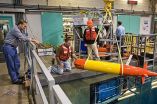In the course of the Summer and Fall 2004, 2005 and 2006 (3 cohorts), human milk was sampled by mothers who had given birth at the University Women's Hospital in Basel. The participants filled out a detailed questionnaire with general questions and, as special feature, in depth questions on use of different types of cosmetic products.
Chemicals out of a large range of products including "modern" chemicals and classical persistent organic pollutants (POPs) were analyzed in the same human milk sample by analytical laboratories in Freiburg, Erlangen and Baden. The list comprised cosmetic UV filters, synthetic musk fragrances, pesticides, phthalates, parabens, flame retardants (polybrominated diphenylethers), and polychlorinated biphenyls (PCBs); in total 89 analyses per milk sample. The chemical analytical data of milk samples of individual mothers were then compared with the information obtained through the questionnaire.
The investigation revealed that one and the same human milk sample contained a large range of chemical contaminants, most of which are known to interact with endocrine systems. Individual exposure patterns differed between different types of chemicals. The study demonstrates for the first time that internal exposure of humans to cosmetic UV filters is widespread. Cosmetic UV filters were present in 85% of human milk samples, at concentrations comparable to PCBs. Synthetic musk fragrances were also present in the milk samples. The presence of UV filters in human milk was significantly correlated with the use of cosmetic products containing these UV filters. As a result, exposure patterns differed between individuals.
It seems plausible that exposure to other cosmetic constituents such as synthetic fragrances is also linked to the use of the corresponding products. However, this could not be investigated because musk fragrances are not declared. In contrast, classical contaminants such as PCBs, DDT and metabolites of DDT as well as some other persistent organochlor pesticides represented a rather uniform background exposure. Their levels were in part correlated with each other and also with fat-rich nutrition.
A total daily intake of each individual chemical was calculated for each individual infant from their individual levels in human milk. Calculation included fat content of individual milk samples, total daily milk intake per infant and body weight of the infant. Some infants exhibited values of daily intake of PCBs and several organochlor pesticides that were above US EPA reference dose values.
Margret Schlumpf and Walter Lichtensteiger, who lead the research said, "Research on the effects of endocrine disrupters (chemicals interfering with hormone actions) has shown that it is of utmost importance to obtain information on simultaneous exposure of humans to different types of chemicals because endocrine active chemicals can act in concert. Information on exposure is particularly important for the developing organism at its most sensitive early life stages. Human milk was chosen because it provides direct information on exposure of the suckling infant and indirect information on exposure of the mother during pregnancy."
An important question during the research was: To what extent lifestyle can influence the presence of chemicals in breast milk? This question was the foundation for the preparation of the questionnaire. The questions were focused particularly on the use of cosmetic products; information on the relationship between the exposure of human populations to constituents of cosmetics and the presence of these constituents in the human body was limited and, in the case of UV filters, absent.
Gert-Jan Geraeds, Executive Publisher of Chemosphere commented, "This study once again emphasizes the importance of global research on the impact of contaminants in the human environment and the need for continuous critical assessment of our priorities in environmental health and consumer habits. I am sure that this investigation will also spark debate at the upcoming first Environmental Health conference in Brazil, February 2011".
INFORMATION: The article Exposure Patterns of UV Filters, Fragrances, Parabens, Phthalates,Organochlor Pesticides, PBDEs, and PCBs in Human Milk. Correlation of UV Filters with Use of Cosmetics by Margret Schlumpf et all will be published in Chemospehere, later this year. DOI:10.1016/j.chemosphere.2010.09.079
Note to Editors
The three year study involved toxicologists from GREENTOX and collaboration from personnel of the University of Zürich, University Women's Hospital Basel, University in Lausanne, and analytical chemists from Freiburg, Erlangen (Germany) and from Baden bei Wien (Austria).
About Chemosphere
Chemosphere is an international journal designed for the publication of original communications as well as review articles. Chemosphere, as a multidisciplinary journal, offers maximum dissemination of investigations related to all aspects of environmental science. Chemosphere will publish original communications describing important new discoveries or further developments in important fields of investigation related to the environment and human health, reviews, mainly of new developing areas of environmental science and special, themed issues on relevant topics. Chemosphere includes the following sections: Persistent Organic Pollutants and Dioxins, Environmental Chemistry, Environmental Toxicology and Risk Assessment and Science for Environmental Technology.
About Elsevier
Elsevier is a world-leading publisher of scientific, technical and medical information products and services. The company works in partnership with the global science and health communities to publish more than 2,000 journals, including The Lancet and Cell, and close to 20,000 book titles, including major reference works from Mosby and Saunders. Elsevier's online solutions include SciVerse ScienceDirect, SciVerse Scopus, Reaxys, MD Consult and Nursing Consult, which enhance the productivity of science and health professionals, and the SciVal suite and MEDai's Pinpoint Review, which help research and health care institutions deliver better outcomes more cost-effectively.
A global business headquartered in Amsterdam, Elsevier employs 7,000 people worldwide. The company is part of Reed Elsevier Group PLC, a world-leading publisher and information provider, which is jointly owned by Reed Elsevier PLC and Reed Elsevier NV. The ticker symbols are REN (Euronext Amsterdam), REL (London Stock Exchange), RUK and ENL (New York Stock Exchange).

